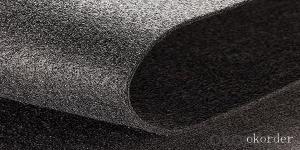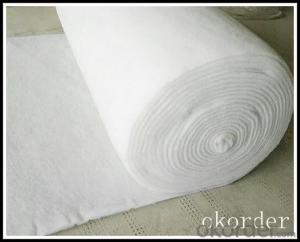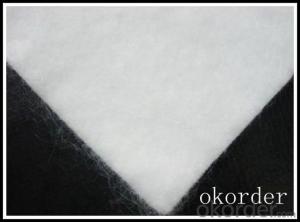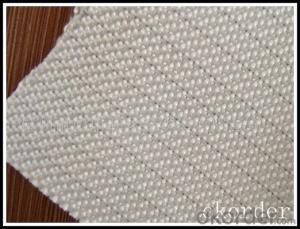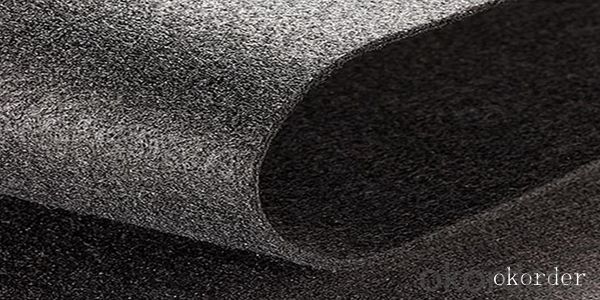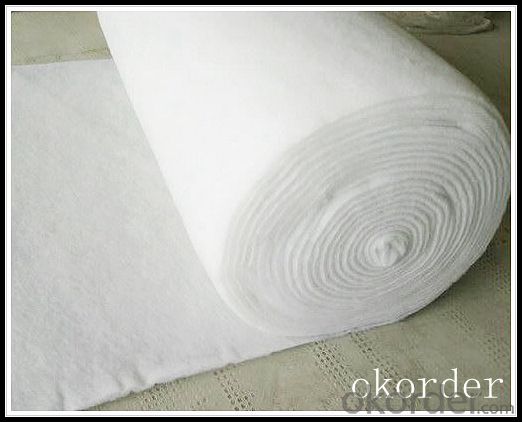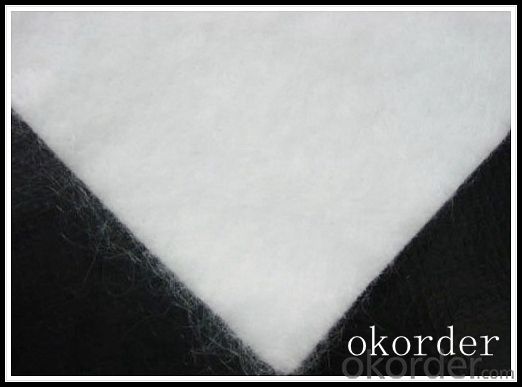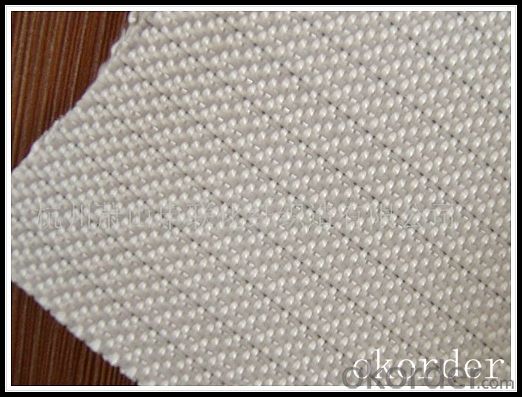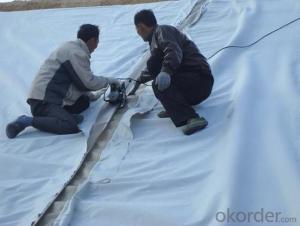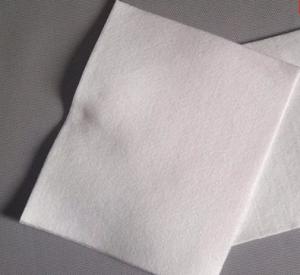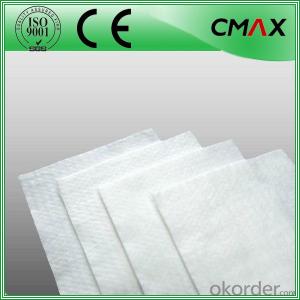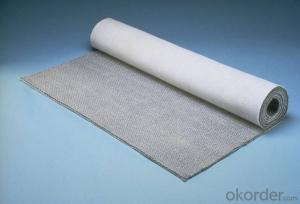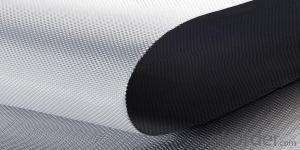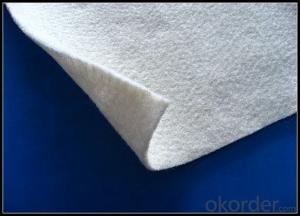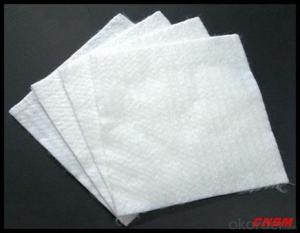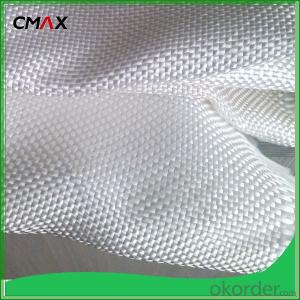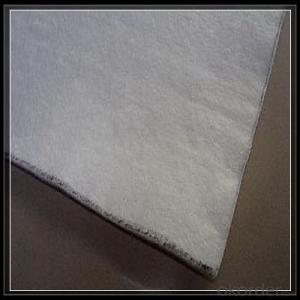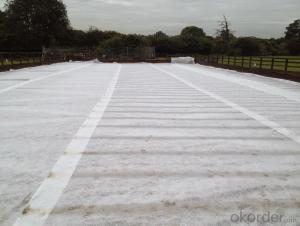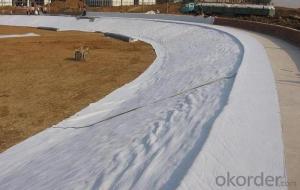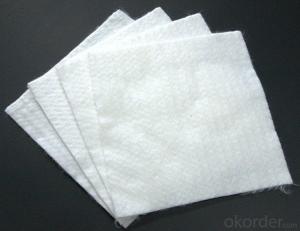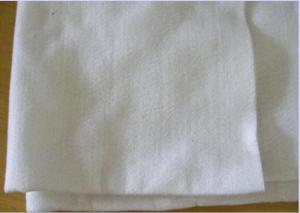Geotextile for Slope Protection - Spunbond Civil Non-Woven Geotextiles Industrial Nonwoven Fabric
- Loading Port:
- China main port
- Payment Terms:
- TT OR LC
- Min Order Qty:
- 1000 m²
- Supply Capability:
- 1000000 m²/month
OKorder Service Pledge
OKorder Financial Service
You Might Also Like
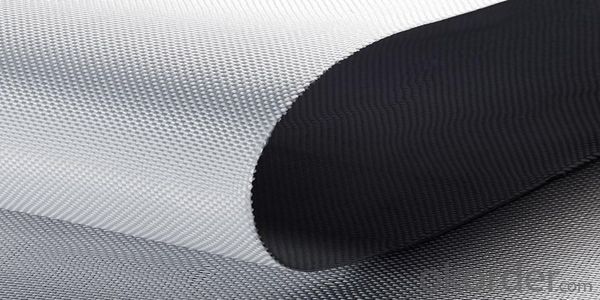
Product Introduction
Nonwoven geotextiles consist of fibers that are continuous filament or short staple fibers. These fibers are then Nonwoven geotextiles Image bonded together by various processes that can include a needling process that intertwines the fibers physically (needlepunched), or a chemical / thermal bonding operation that fuses adjacent fibers together. The resulting nonwoven geotextiles have a random fiber orientation with high porosity and permeability, but indirect and unpredictable openings, a thickness ranging from thick felt to a relatively thin fabric, and low modulus and high elongation (needlepunched).
1. Geotextile Specifications
1) Weight / Mass: 100g/m2-1500g/m2
2) Width: Within 8 m (1m-8m)
3) Length: 50m-100m/roll (as request)
4) Material: PP / PET
5) Color: Black , white , grey and other color
6) Certificate: CE/ISO9001 , ISO14001
7) Manufacturing method: nonwoven / woven
Features and Benefits
Nonwoven structure, providing excellent surface friction and built-in elongation
Effective filter, with tight pore size (AOS=70) and high permittivity
High tensile strength, with excellent puncture and tear resistance
Range from 3.2 oz/sy (109g/sm) – 16.0 oz/sy (543g/sm)
Thick structure, allowing cushioning and lateral gas and liquid transmission
Our Service
Quality assurance
1.On a regular basis or as per your request,we entrust national testing agencies to conduct quality inspections
2. Strictly in accordance with the ISO9001-2008 international quality system standard,we monitor and manage the whole process throughout production,quality testing,and measurement to ensure product quality
3. For quality-related construction delay or substandard construction(except for damage or losses due to customer’s responsibility or irresistible natural disasters),we have refunding,replacement,and repair services.We will respond to customers’ feedbacks on quality issues within 24 hours.
Packaging & Shipping
Packing: PLASTIC FILM INSIDE, AND WOVEN BAG OUTSIDE
Shipping: About 15 days after receipt the deposit
FAQ:
Q: What kind of payments does jenor support?
A: T/T, L/C, Cash are accepted.
Q: Do you charge for the samples?
A: Accordeing to our company policy, the samples are free, we only charge the freight fee. And we will return the freight fee during the next order.
Q: Can you produce according to customers' design?
A: Sure, we are professional manufacturer, OEM and ODM are both welcome.
Q: Do you have other products?
A: Yes, please check the pictures:
- Q: Are geotextiles resistant to punctures and tears?
- Yes, geotextiles are generally designed to be resistant to punctures and tears. They are made from strong materials that provide durability and can withstand external forces, making them an effective solution for various applications requiring such resistance.
- Q: Can geotextile skin be connected?
- Geotextile skin can be touched. Geotextile production of raw materials is polyester fiber, polyester has been widely used in daily life. Such as clothes are also a lot of polyester material. So do not worry, geotextile is not harmful to the human body.
- Q: What are the different geotextile installation techniques for roadways?
- There are several geotextile installation techniques for roadways, including overlay installation, trench installation, and full-depth installation. Overlay installation involves placing the geotextile on top of the existing road surface before applying a new layer of asphalt or other material. Trench installation involves placing the geotextile in a trench dug along the road's edge and backfilling it with soil or aggregate. Full-depth installation involves placing the geotextile directly beneath the entire road structure, providing reinforcement and separation between the subgrade and the overlying layers. The choice of technique depends on the specific road construction requirements and the desired benefits of using geotextiles.
- Q: How do geotextiles improve the performance of geocells?
- Geotextiles improve the performance of geocells by providing additional strength, stability, and filtration capabilities. They act as a barrier between the soil and the geocell structure, preventing soil erosion and promoting proper drainage. Geotextiles also enhance load distribution and increase the overall structural integrity of the geocell system, making it more effective in various applications such as soil stabilization, erosion control, and slope protection.
- Q: How do geotextiles improve the performance of asphalt overlays?
- Geotextiles improve the performance of asphalt overlays by providing reinforcement and stabilization to the pavement structure. They help to distribute the load more evenly, prevent the intrusion of water and vegetation, and improve the overall durability and longevity of the asphalt surface.
- Q: How do geotextiles affect noise pollution?
- Geotextiles can help reduce noise pollution by acting as a sound barrier. When used in construction projects such as roads or buildings, they can absorb and dampen sound waves, preventing them from propagating and reducing the overall noise levels in the surrounding area.
- Q: Do you have a drainage board and a geotextile?
- How many dishes? Drainage board and geotextile a square need about 15 yuan cost, their trade-off
- Q: How do geotextiles help with ground reinforcement?
- Geotextiles help with ground reinforcement by providing a strong and stable support system. They are typically made of synthetic materials and are placed beneath the ground surface to distribute the load and prevent soil erosion. The geotextiles act as a barrier, allowing water to pass through while retaining soil particles, which helps in maintaining the stability of the ground and preventing any potential damage or failure.
- Q: Whether the geotextile filter layer includes a plastic mesh
- Hello, geotextile can be used as a separate filter and grid sand with as a filter layer, Huazhi geotextile material manufacturers for you to answer
- Q: Why do you shop the geotextile during the construction of the road
- Huazhi geotechnical materials manufacturers to answer
Send your message to us
Geotextile for Slope Protection - Spunbond Civil Non-Woven Geotextiles Industrial Nonwoven Fabric
- Loading Port:
- China main port
- Payment Terms:
- TT OR LC
- Min Order Qty:
- 1000 m²
- Supply Capability:
- 1000000 m²/month
OKorder Service Pledge
OKorder Financial Service
Similar products
Hot products
Hot Searches
Related keywords
